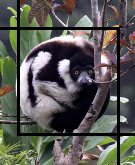Wildlife Expedition to Thailand
In the summer of 2008, my family and I traveled to many of Thailands most wild areas, reserves and national parks. We spent many weeks trekking and exploring some of the most remote regions of this amazing country. During the expedition we did rack up a fairly impressive species list with at least 35 species of mammals, 160 species of birds and who knows how many species of herps! And we explored some of the most impressive wilderness left anywhere in Southeast Asia.
Thailand Locations: Khao Luang (Krung Chin), Kaeng Krachan, Khao Yai and Pang Sida, Koh Lanta National Parks as well as Huai Kha Khaeng Wildlife Area and Bueng Boraphet Non-hunting Area.
Dates: July 9 through August 18, 2008
Group: Myself, wife and 5 year old son (best travel partners ever!!!)
In addition to the images that follow, log on to our Thailand Images Galleries:
Mammals of Thailand
Birds of Thailand
Temples and Ancient Sites of Thailand
Reptiles and Amphibians of Thailand
Lanscapes of Thailand
People of Thailand
Khao Luang National Park
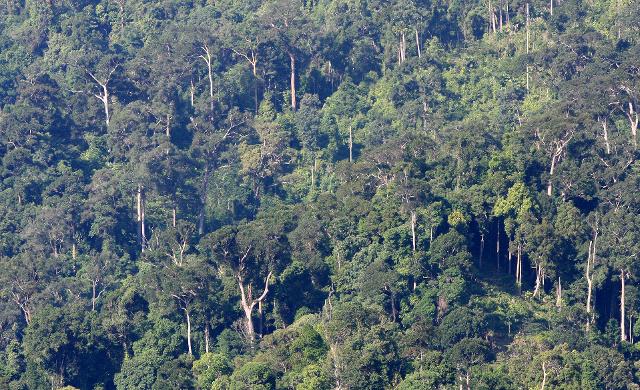
The primary forest gallery of Khao Luang National Park in Nakhon Si Thammarat Province.
In and around Khao Luang, we have continually missed the zoological high points over the years including such species as the Malayan Tapir, Asian slow loris and stump-tailed macaques, but had some success with other species this year with quality sightings of Lowe’s squirrels, western striped squirrels, giant black and white squirrels and Indochinese ground squirrels. We heard and elephant crashing through the jungle for the first time ever in Khao Luang along the Krung Chin waterfalls trail. Our two best sightings were a Sunda pangolin (!!!!) and a stump-tailed macaque troop (Macaca arctoides) – very excited with both accounts! Khao Luang is also an outstanding birding location and is off the beaten path enough to allow one to escape the noisy Thai crowds (at least some parts of the park allow this…). This rarely visited park is a worth a trip if you are in the south. Although you may have to self-drive as outfitters rarely go there.
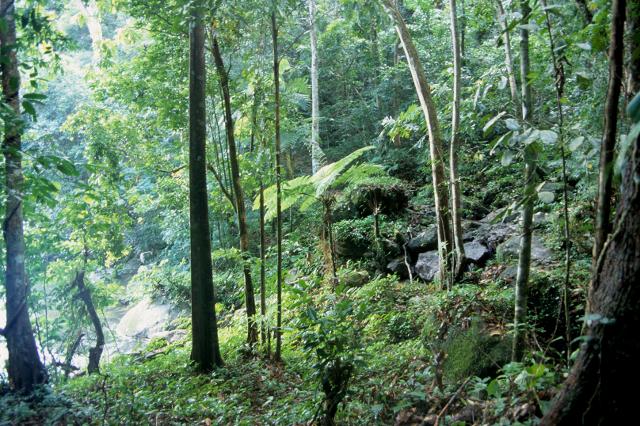
Khao Luang has some very impressive forest galleries and is home to the largest tree ferns on the planet.
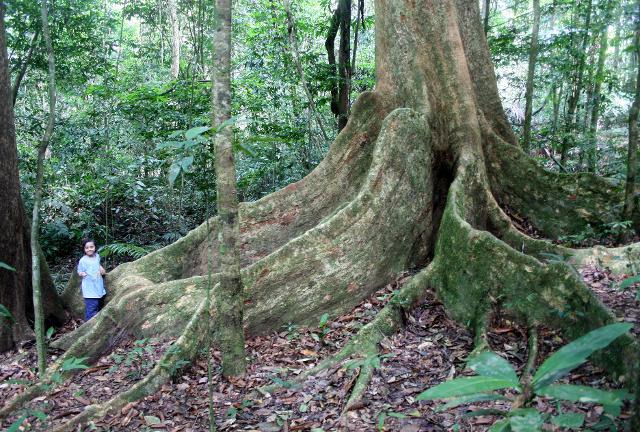
Take a look at these impressive buttress roots of this forest giant!
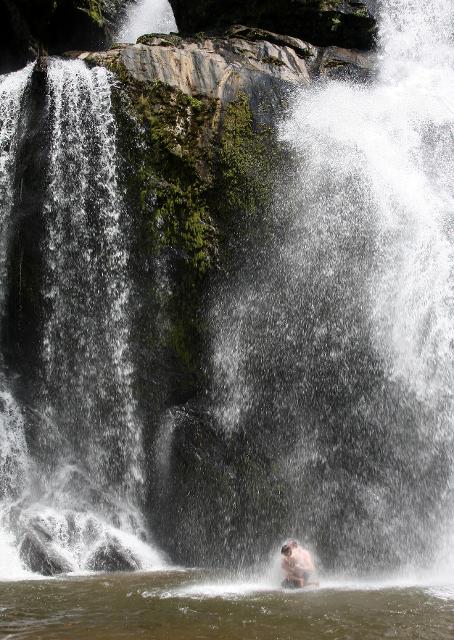
Cokie and Coke taking a dip in Krung Chin Waterfalls
Koh Lanta National Park
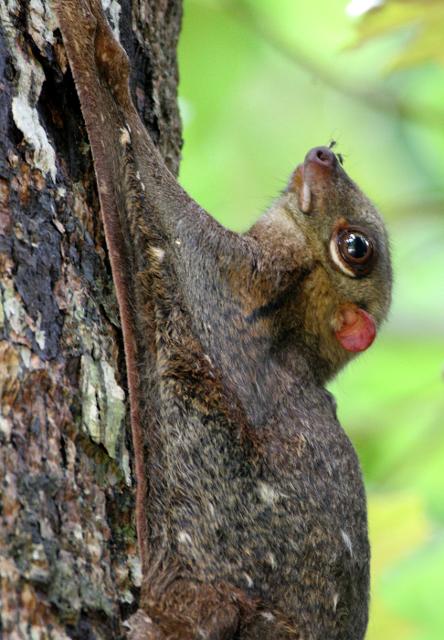
My first wild Colugo seen at eye level in Koh Lanta.
Koh Lanta is a spectacular island. The mid-rib of the island boasts a rarely visited yet surprisingly prolific patch of primary and secondary dipterocarp forest protected by the national park (not to be confused with Koh Lanta Marine National Park). The best entry point is on the southern part of the island. This year we were fortunate to have quality viewings of dusky langurs (two large troops), Pallas’s squirrels, common treeshrew, crab-eating macaques and a Sunda colugo sleeping at eye level right next to the parking area. We also had some great herpetological sightings and bird viewing there.
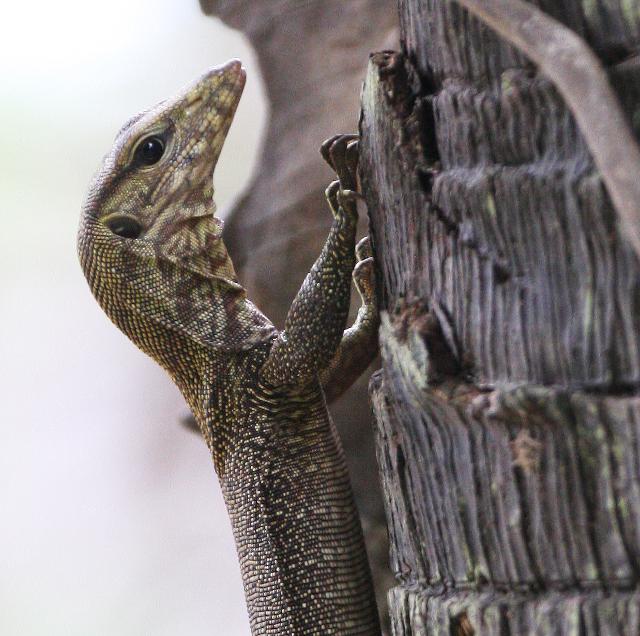
Clouded or Bengal Monitor Lizard climbing a palm on the beach at Koh Lanta.
Kaeng Krachan National Park
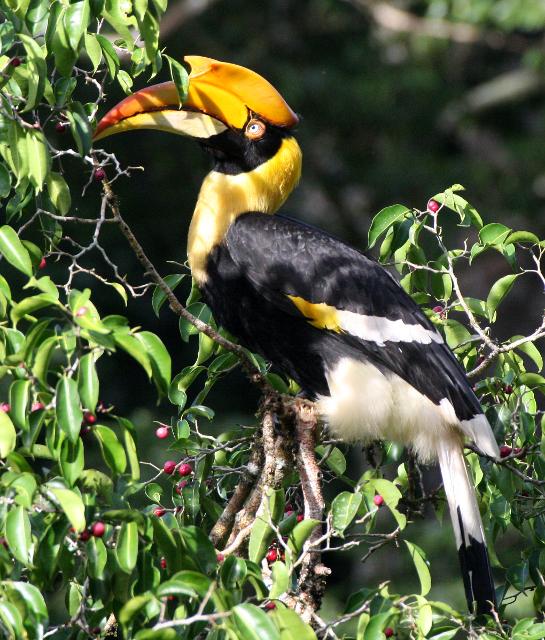
A glorious Great Hornbill seen daily on a particularly productive fruiting Ficus in Kaeng Krachan.
No doubt one of the premier wildlife destinations in Thailand, Kaeng Krachan should be high on everyone’s ‘gotta-go-to’ list. The best location for wildlife is near the Thale Mog (“sea” fog) viewing area near the Myanmar border – the west end of the park in and around the camping area and main road. We were very encouraged to see much fresh guar sign along the road there but we were skunked for that species yet again (I have been trying to see a damn gaur for over a decade now in at least three different countries!). Highlights of this location were Pallas’s and grey-bellied squirrels, western stripped squirrels, red muntjac, masked palm civet, white-handed gibbons, dusky langurs, crab-eating macaques, Malay porcupines and Asian elephant. Although we only a few mammals, we counted well over 75 species of birds in two days – truly an amazing birding spot! There was a Ficus tree in full fruit right next to the camping area that had over 50 species of birds at a time on that amazing tree. As with all Thai national parks, this is a place to be avoided during weekends and or holidays. We had the distinct pleasure of staying there during both – sleep is evidently something not needed by the Thai and maintaining a quiet camp ground is not a priority for the rangers as the signs warning no loud music, singing, noise in general seem to be purely for decoration…..
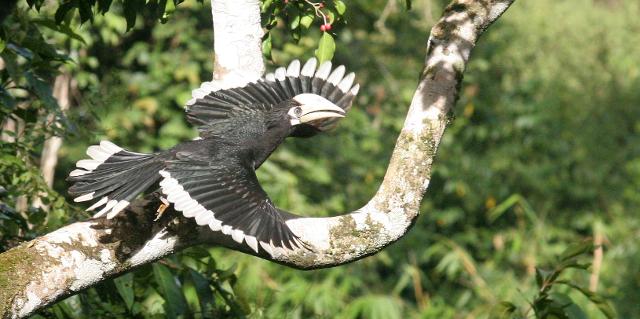
An Oriental Pied Hornbill taking flight from the same Ficus. (Sivaporn Sukjaroen)
Huai Kha Kaeng Wildlife Reserve
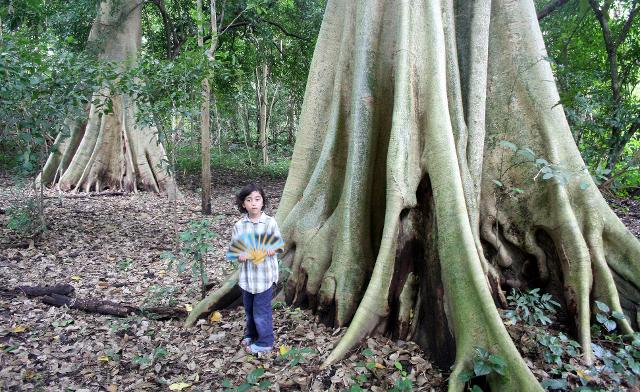
Cokie standing next to a couple young forest giants in Huai Kha Khaeng.
There is little doubt that Hua Kha Khaeng and the other protected areas of the Western Forest Complex are the last hope for many of Southeast Asia’s mega fauna. Consisting of primary, secondary and tertiary forests, HKK is an amazing wildlife hotspot. We had to procure special permits to enter which needed to be done in Bangkok. My wife being Thai made this a breeze. We were allowed virtually any activity we wanted – with the exception of multi-day back country expeditions. This was no issue as we were not equipped for such. We tried to enter the southern entrance initially near Ban Mae Dee but got hopelessly stuck in about 2 feet of red Thai mud in our high profile (but two-wheel drive) truck. After spending some time getting out of this mess we decided to spend our remaining five days up north near the reserve’s headquarters. We hooked up with the camp host (the name escapes me but I can absolutely find out if someone needs a good guide there) who initially did not strike me as someone who knew what he was doing, but after spending some seriously intense time in the bush of HKK, it became quickly clear this guy knew the land like the back of his hand and was a very skilled tracker. He did not speak English however (not an issue for us – wife is native and I am proficient enough.)
Highlights of HKK included quality sightings of Asian elephants (at uncomfortably close quarters – three meters behind a stand of bamboo until they smelled us and stampeded through the forest like a frickin’ freight train leaving a massive swath of destruction in their wake…), two separate herds of Banteng, tons of sambar deer and red or common muntjac (and one possible Fea’s but I am not counting it), ferret badgers, Burmese hare, hairy-footed flying squirrel, northern tree shrews, Asiatic golden jackels (along the main road), crab-eating macaques, fresh leopard and tiger sign, and many species of birds and reptiles. The region we visited is rife with prey and there is little doubt of healthy felid and other predator populations.
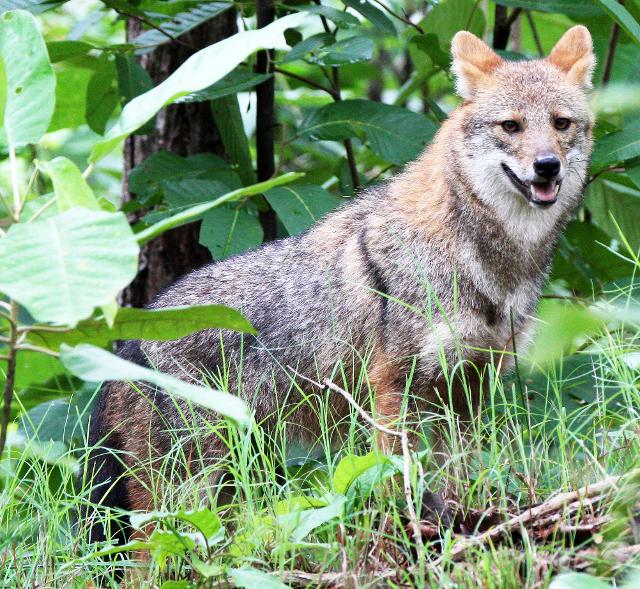
An Asiatic Golden Jackal seen along the main road to the Headquarters of Huai Kha Khaeng.
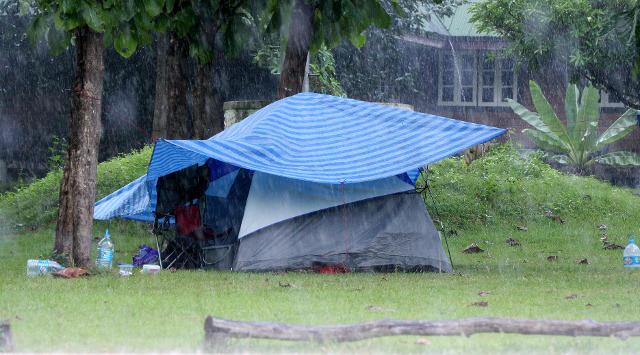
Base camp Huai Kha Khaeng during a major downpour!
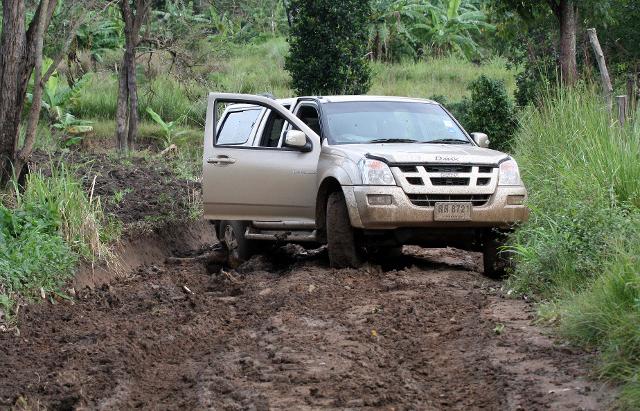
Getting to the more remote sections of Huai Kha Khaeng can be a challenge!
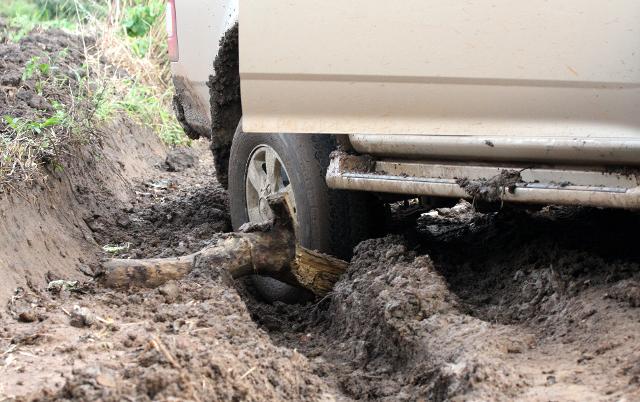
Thank goodness for some helpful Lahu villagers and their brand new Ford tractor!
Khao Yai National Park
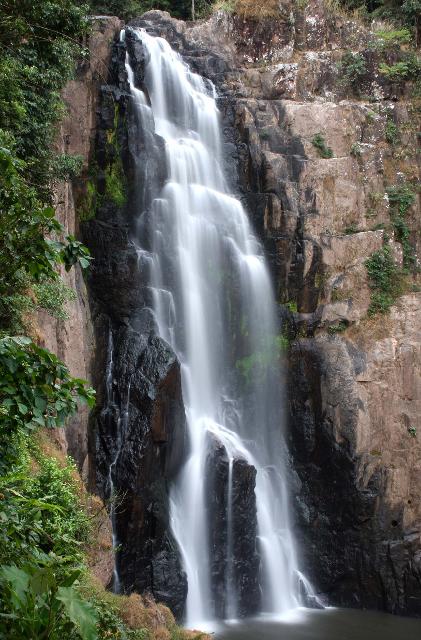
Haew Narok Waterfalls in Khao Yai National Park.
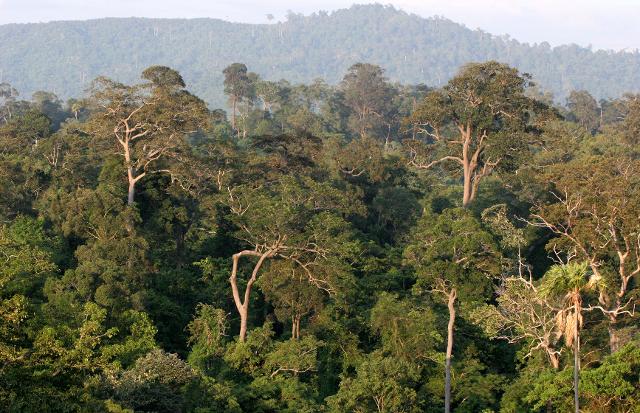
The spectacular dipterocarp forest gallery of Khao Yai.
Thailand’s most famous national park by far, Khao Yai rarely disappoints. We have been traveling there at least once a year for nearly a decade now and have always been pleasantly surprised. This year was no different although we failed yet again to see gaur – even though we traveled 90 km to the east side of the park to a viewing tower that was “guaranteed” to produce gaur….oh well, something else to keep trying for… The species seen this year included masked, large and small Indian civets, variable squirrels (at least three morphs), giant black squirrels, white-handed and pileated (heard on numerous occasions) gibbons, crab-eating and northern pig-tailed macaques, Asiatic golden jackels, northern tree shrews, Indochinese field rat, elephants (heard only this time). We even came across a lounging pack of dhole near one of the water holes of the 400 buildings. There is little question that the high point of Khao Yai (and for the summer for that matter) was the sighting of a CLOUDED LEOPARD on 17 August 2008 @ 11:30 AM on a warm sunny morning near the western entrance just past the waterfalls along the main road! We were literally done with our amazing expedition season for 2008 and heading home to southern Thailand. Wow – what a way to finish our trip! Interestingly, Cokie has had a really awesome wildlife experience on his birthday for nearly every year of his life: 2007 - Polar Bear, 2008 - Clouded Leopard, 2009 - Caracal!
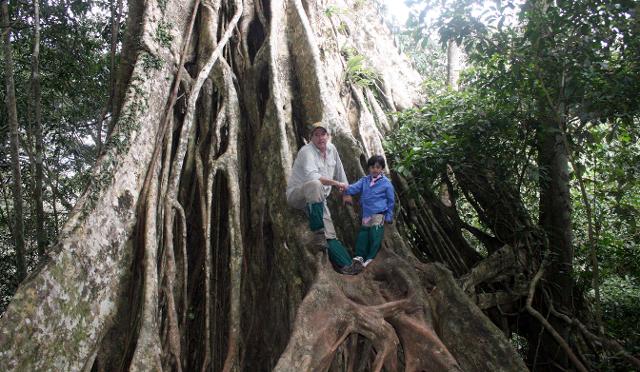
This is perhaps the largest Ficus I have ever climbed on!
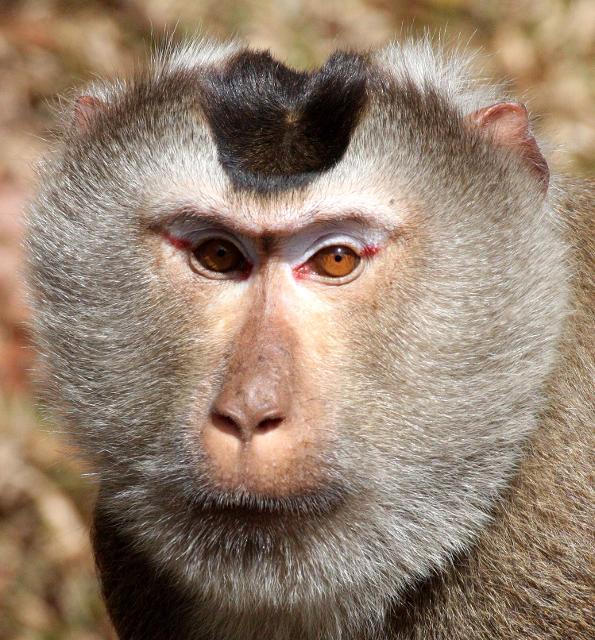
This big bad Pig-tailed Macaque scared the heck out of Cokie! "Daddy, daddy, a giant monkey is coming to get me!" I told him to open the door, but it was locked! Yikes! Luckily we were able to get the door open in plenty of time....but who the heck locked the door!?
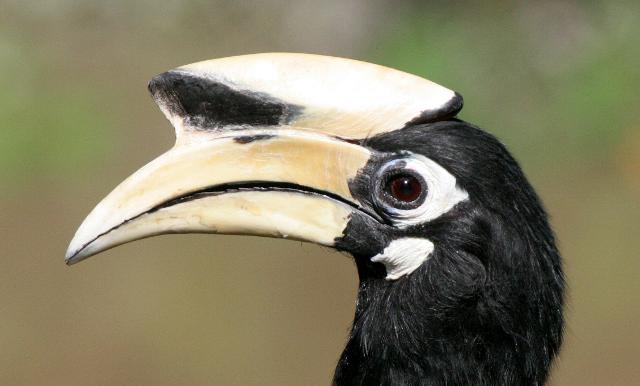
A close-up look at another Oriental Pied Hornbill.
Pang Sida National Park
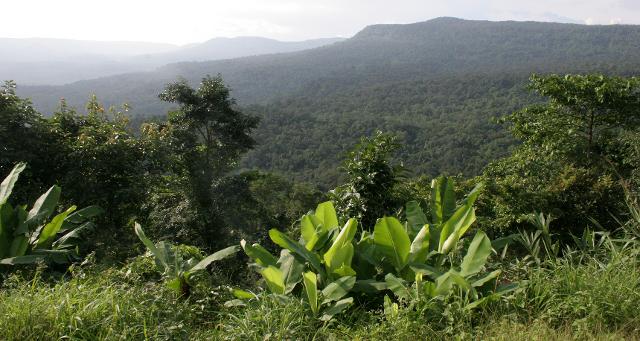
Pang Sida's great panorama view!
We visited this park with the primary target species being gaur, yet sadly we were skunked yet again…. But we did very much enjoy our stay there. We had a great time cruising the main road all night long spotlighting from the hood of our truck. It was great to be in charge of the lights ourselves as some of the other spotters in places like Khao Yai leave much to be desired. We saw some great owls and nightjars, but our mammals for Pang Sida were limited to some sambar, masked palm civet, and some Indochinese ground squirrels. It is a very spectacular destination and we will be sure to spend more time there in the future.
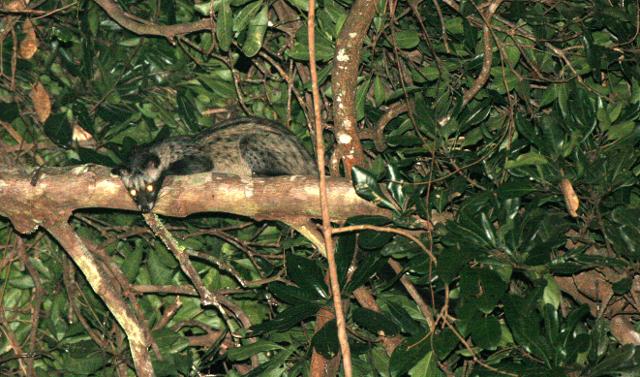
We had a very successful night drive in Pang Sida, with Som and Cokie sitting on the hood of the truck and me driving about 10 mph through the jungle. We missed nothing! Even Cokie had a couple good spottings. We caught a glimpse of this beautiful Common Palm Civet (Paradoxus hermaphroditus) hunting from this tree near our base camp.
Bueng Boraphet Non-hunting Area
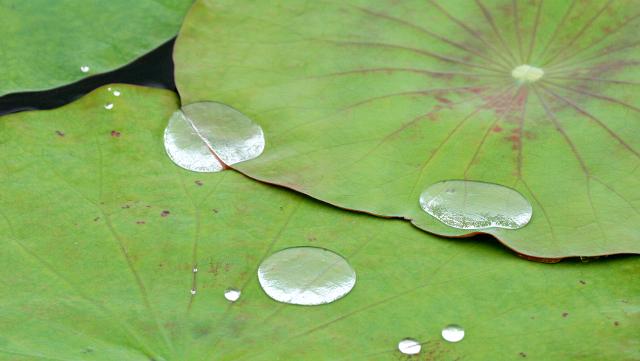
Lotus pads in Lake Bueng Boraphet.
This was primarily a birding spot but I believe it could produce some great rodent diversity if you had some Elliott traps and the like. We had a great two days birding the heck out of this place – tons of species and quality sightings. We will be leading a group there this December in the peak of the migration – wish us luck.
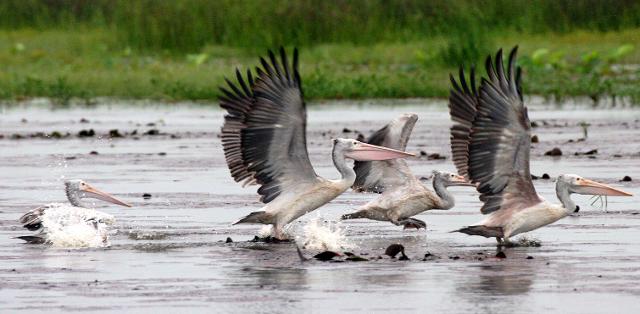
Spot-billed Pelicans taking flight. This is a true success story for Bueng Boraphet. Originally these were very common birds throughout Southeast Asia. About 20 years ago, they were virtually extinct with less than one or two being seen annually in Bueng Boraphet. On this trip alone, we saw at least 100!
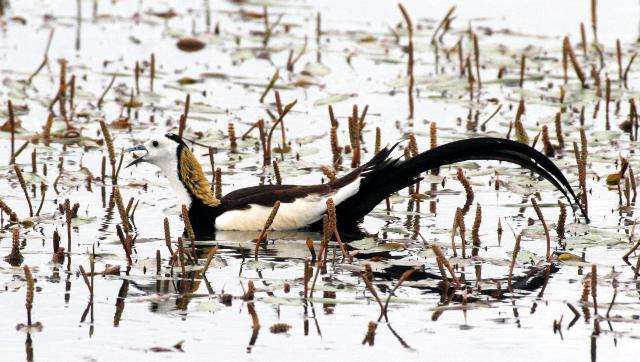
The Pheasant-tailed Jacana is arguably the most spectacular bird in Bueng Boraphet!
Nam Nao National Park
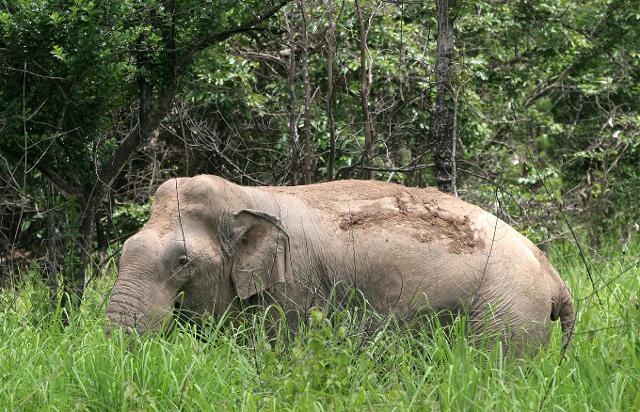
We were driving through the heart of the dipterocarp/pine forest of Nam Nao when we spotted this giant bull Asian Elephant grazing the grasslands at the edge of the pine forest. I approached to get these images but was charged by the irritated bull. Luckily for me it was a mock charge!
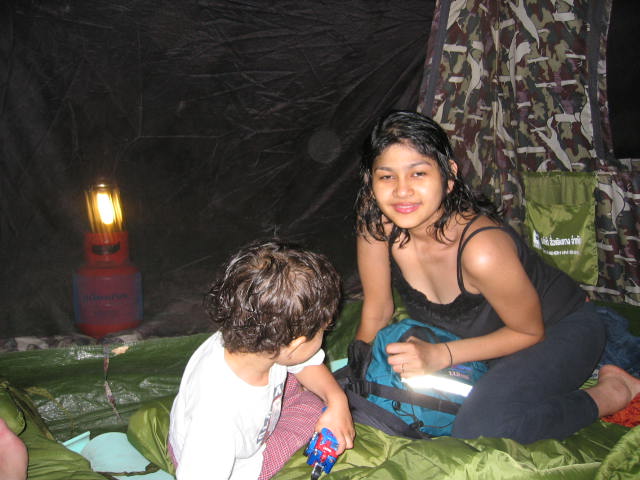
Camping in Nam Nao!
Khao Sam Roi Yod National Park
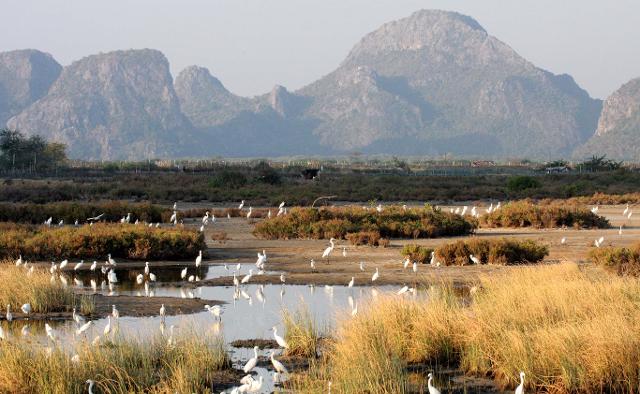
Khao Sam Roi Yod is definitely a world class birding hotspot. Ponds with Great and Little Egrets are common throughout the region.
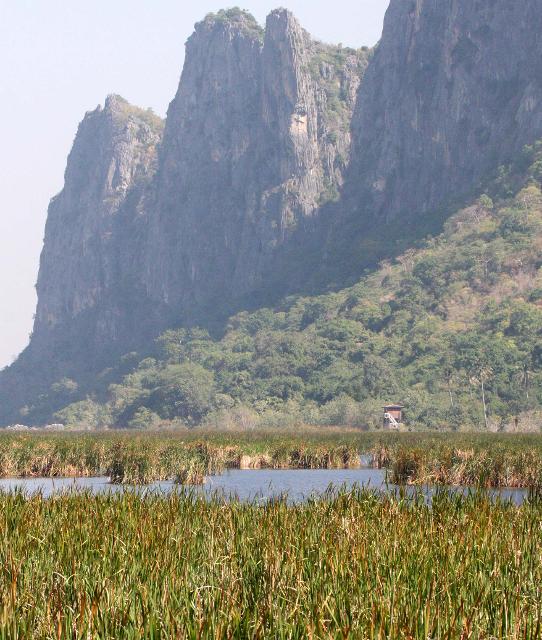
Another gorgeous wetland on the southwest part of the park.
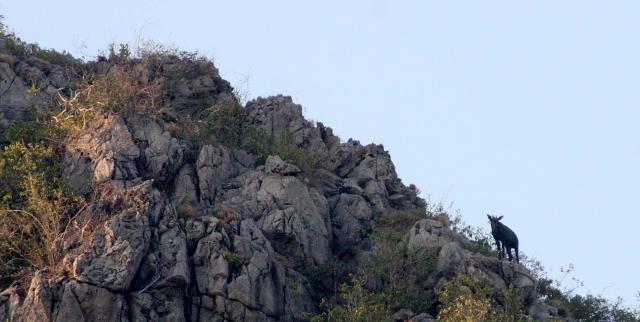
A very rare image of a Southern Serow (Capricornis sumatrensis) seen grazing the forbs on one of the limestone crags of Khao Sam Roi Yod! This picture was seen by the rangers of the park. They were very excited as none of them had seen the Serow for nearly three years!
Krabi Province
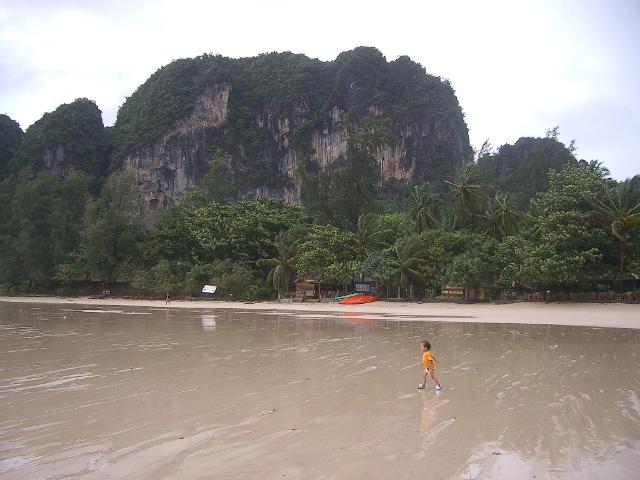
While not exactly a reserve or national park, the limestone formations of Railey Beach and the surrounding areas of Krabi Province are fantastic natural areas. Here is Cokie on a beach walkabout!
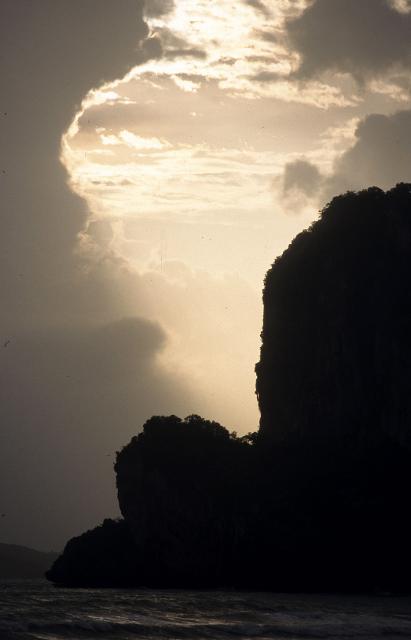
A glorious Krabi sunset!
Here are some more images of our expeditions to Wild Thailand!
